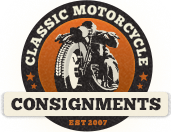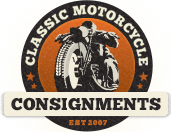Harley introduced the new side-valve 40 hp, 74 cubic inch VL was in 1930 to replace the pocket-valve, inlet-over-exhaust engine in the old J model the company had been building since 1911. Harley-Davidson boasted a number of improvements over the preceding model with the VL, but there were unfortunate teething problems that made themselves known just as the Great Depression was getting underway.
Harley advertisements of the time were quite ambitious in extolling the virtues of the VL, but early models had engines with a deficit of horsepower, a bad clutch, mufflers that clogged easily and frames that tended to break. William H. Davidson recalled a frantic trip made to New York in late 1929, when the factory team replaced mufflers, springs, valves and pistons on a team of new VLE models bought by the Buffalo Police Department. Police models included first-aid kit, a brass fire extinguisher and a handlebar crossbar that mounted a red light.
At least on paper, the VL was quite appealing. The brochure showed the VL to be both longer and lower with interchangeable wheels, balloon tires, drop center rims, improved road clearance, automatic increase of generator output, and dual front drive chain. The proven Riccardo removable heads were claimed to develop 15 percent more horsepower than the preceding model, and a 22-amp battery with a sealed coil was fitted. A plunger-type crankcase oil drain was fitted, with cam gear case vacuum to reduce oil leakage.
The early problems would eventually be solved with an extensive engine redesign. A larger crankcase with heavier flywheels solved the problem of power, and the frame was beefed up. The V was the standard model, the VL had a higher compression engine, the VS was geared for sidecar work, and the VC had cast iron pistons and was the 3-wheeled Servi-Car. Options included toolbox, front and rear wheel stands, luggage carrier and leather panniers.
The VL started out with the customary olive drab paint with a bright orange stripe but by 1932 the bikes were often finished in bright Art Deco two-tone colors. One of the outstanding extras that accompanied the VL was the toolkit. The 24 tools that came in the kit allowed the rider to practically do a roadside rebuild. In the case of the early bikes, it was probably just as well.




































































































